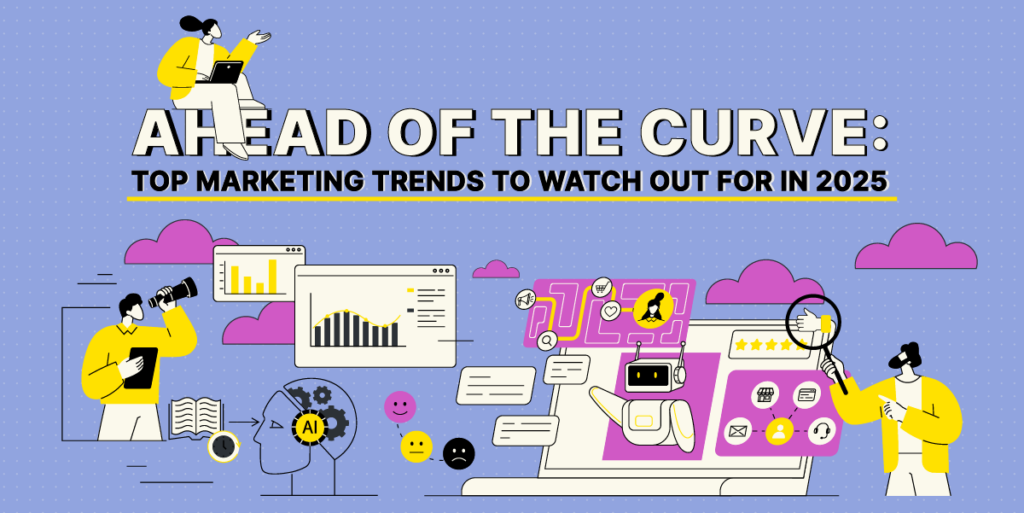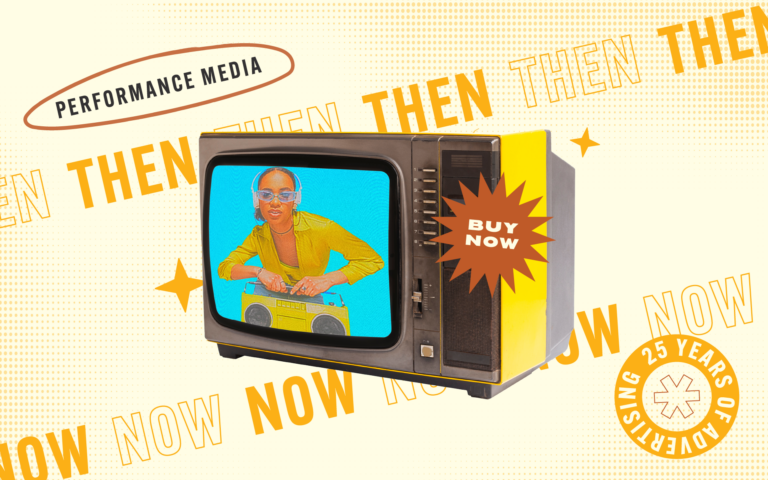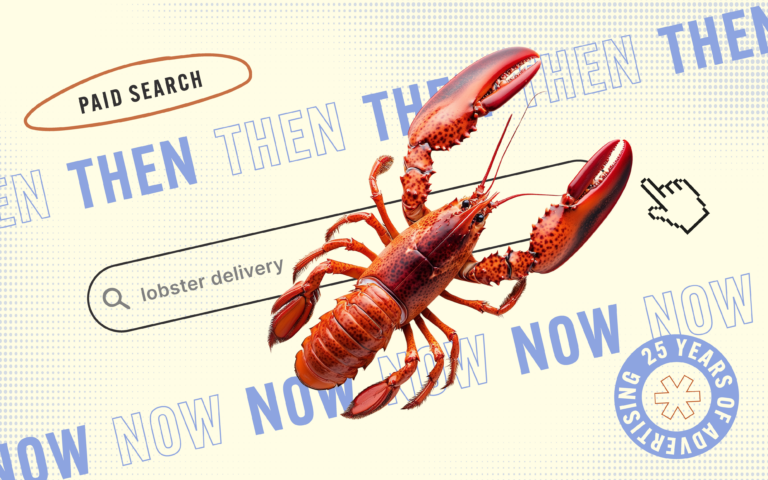In 2025, marketing is about to get even more exciting—and let’s be honest, a little overwhelming. Every time you think you’ve caught up, another trend appears out of nowhere like that one friend who always “just pops by.” Short-form videos are dominating our feeds, AI is generating ad campaigns before you’ve even had breakfast, and contextual advertising is making a comeback (because apparently, cookies are out, and relevance is in).
So, how do you keep up? Better yet—how do you actually use these trends to grow your brand, connect with your audience, and boost those sales numbers? Relax. We’ve got you covered.
This year’s trends aren’t just about jumping on the next shiny thing—they’re about creating smarter, more engaging strategies that resonate with customers. From shoppable media that lets you “add to cart” without leaving TikTok to AI tools that help your marketing look like it was crafted by a team of creative geniuses, these trends are here to make your life easier and your business more profitable.
Whether you’re a small business testing the waters or a marketing pro looking to level up, we’ll break down the top 2025 trends, the tools you need, and actionable tips to make them work for you. And because we like to keep things fun and relatable, expect some friendly guidance and a few witty tips along the way.
Grab your notebook (or that trusty Notes app) and let’s dive into the trends that are set to change the marketing game in 2025. It’s time to start marketing like you mean it.
1. Contextual Advertising: Back to Basics, Smarter Than Ever
With third-party cookies on their way out, contextual advertising is making a comeback. Unlike behavioral targeting, which tracks users’ past activities, contextual ads align with the content people are currently consuming. Think: an ad for running shoes on an article about marathon training.
Why it Matters: It’s less invasive and feels more natural to users, building trust while still delivering value.
Tools to Use: Platforms like GumGum and Seedtag use AI-driven contextual targeting to place ads where they’re most relevant.
Pro Tip: Ensure your messaging matches the tone and relevance of the content. An ad that seamlessly fits the context will perform better and feel more authentic.
2. AI-Powered Personalization: Marketing That Feels Like Magic
In 2025, one-size-fits-all marketing is ancient history. AI-powered tools will create hyper-personalized campaigns, tailoring messaging, visuals, and products to individual customers. Platforms like HubSpot, Salesforce Marketing Cloud, and Persado analyze real-time data to deliver the right content to the right person, at the right time.
Why It Works: Personalized marketing feels more relevant and engaging, increasing customer satisfaction and driving higher conversions.
Tricks for Success:
• Dynamic Content: Use AI tools to personalize email subject lines, product suggestions, and ads based on browsing behavior.
• Chatbots: Implement AI chatbots (e.g., Tidio or Drift) for round-the-clock personalized customer support.
Guidance: Businesses that personalize effectively enjoy higher ROI and customer loyalty. Start small—try personalized emails or website banners, then scale up with AI tools.
3. AI-Generated Media Content: Scaling Creativity Without Limits
The demand for fresh, engaging content can feel overwhelming, but AI-generated tools are here to help. Platforms like MidJourney, DALL·E, and Runway are revolutionizing content creation. Whether you need ad visuals, video clips, or even written copy, AI helps brands churn out on-brand assets quickly and affordably.
Why It’s Useful: AI helps businesses scale their content production without overspending on resources.
Ideas to Try:
• Use AI to generate social media graphics and video ads at scale.
• Develop unique product descriptions or ad copy tailored to niche audiences.
Pro Tip: Use Canva AI or Sora to create Instagram Reel videos featuring AI-generated models wearing their latest collection—cutting costs while maintaining a professional look.
4. Short-Form Video Dominance: Snackable Content Rules the Scroll
Short-form videos on platforms like TikTok, YouTube Shorts, and Instagram Reels are here to stay. Why? They’re entertaining, addictive, and highly shareable—making them a goldmine for businesses looking to engage their audience.
Why It Matters: Short-form videos meet audiences where they spend their time—scrolling for quick, engaging content. Businesses that embrace this format can grow their reach and build stronger audience connections.
Quick Tips:
• Focus on storytelling: Hook viewers within the first 3 seconds.
• Use trending music and hashtags to maximize reach.
• Try interactive elements like polls, challenges, or clickable links.
Pro Tip: Tools like CapCut and InShot make editing short videos easy for beginners. Keep videos authentic and on-brand—audiences love a behind-the-scenes peek at your business!
5. Shoppable Media Experiences: Turning Ads Into Checkout Lines
Imagine scrolling through Instagram, seeing a product you love, and buying it instantly—without leaving the app. That’s the power of shoppable ads, and it’s transforming social commerce. Platforms like YouTube, Pinterest, and TikTok are integrating checkout experiences directly into media content.
Why It Works: Fewer clicks = higher conversions. Consumers are more likely to buy when the process is quick and seamless. Customers can see a product, click to learn more, and make a purchase—all without leaving the app.
For Businesses:
• Use platforms like Shopify Collabs to integrate your catalog into social platforms.
• Partner with influencers to showcase products in action and link directly to purchase.
6. Audio Advertising in Podcasts: Listen Up for ROI
With 460+ million podcast listeners worldwide, audio advertising is booming. Ads on Spotify, Apple Podcasts, and premium networks allow brands to connect with highly engaged audiences during “screen-free” moments, like commuting or working out.
Why Podcasts? They deliver hyper-targeted ads based on listener preferences. Tools like Spotify Ad Studio and AdsWizz make it easy to create dynamic, personalized audio campaigns.
Pro Tip:
• Keep ads short (30–60 seconds).
• Make them conversational and relevant to the podcast audience.
• Add a call-to-action: “Visit [yourwebsite.com] for an exclusive offer!”
7. Voice Search and Voice Commerce: The Rise of “Alexa, Buy That”
Voice-enabled search and commerce via devices like Amazon Alexa, Google Home, and smartphones are becoming second nature for consumers. Now more than ever, they are using voice commands to search for products, services, and information—so brands need to optimize for voice queries to stay ahead of the competition.
Why It Matters: Voice search is about speed and convenience. Brands that adapt to this trend will connect with customers in new, streamlined ways.
How to Adapt:
• Focus on conversational SEO: People speak differently than they type (e.g., “What’s the best running shoe?” vs. “best running shoes 2025”).
• Ensure your product descriptions are optimized for smart assistants to pull accurate answers.
For Retailers: If you’re on platforms like Amazon, ensure your products are voice-purchase ready. Voice search users prioritize speed and convenience, so align your offerings accordingly.
Ready to Step Into 2025?
The future of marketing is looking bright—and a little exciting too! With trends like AI-driven personalization, shoppable media, and voice search, there’s a lot to look forward to in 2025. But don’t worry, you don’t have to dive into everything at once. The key is to experiment, find what works for your brand, and focus on building deeper, more meaningful connections with your audience.
Whether you’re creating quick, engaging videos or optimizing for voice search, these trends can help you stand out, grow your presence, and drive better results. So, take what you’ve learned here and start thinking about how you can use these trends to your advantage.
The marketing world is changing, and with the right approach, 2025 can be a year of incredible growth for your brand. Ready to make it happen? Let’s get started!













